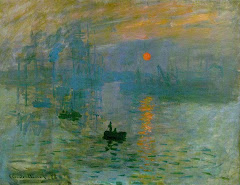Bibliographic reference :
RIZZI A., VOLTONI F., GIRARDI S., GONZO L., REMONDINO F. DIGITAL PRESERVATION, DOCUMENTATION AND ANALYSIS OF PAINTINGS, MONUMENTS AND LARGE CULTURAL HERITAGE WITH INFRARED
TECHNOLOGY, DIGITAL CAMERAS AND RANGE SENSORS.
Available at : cipa.icomos.org/fileadmin/papers/Athens2007/FP125.pdf
Extract :
"2.1 Image-Based Modelling (IBM)
Image data are probably the most complete source for digital documentation and 3D modelling. Indeed, geometry and texture information can be derived at the same time, using cheap sensors and fast procedures. Generally the image measurement phase is regarded as the most tedious part leading non-expert to consider this modelling approach as inappropriate, time consuming and, with the advent of range sensors, as out-ofdate.
Between IBM methods, photogrammetry is a highly accurate and flexible approach, suited for different scales and used to derive metric and reliable information of a scene from a
set of images [Remondino and El-Hakim, 2006]. Images acquired in the visible domain are generally employed, even if IR or UV data could also be employed. Old images, stored in
databases or archives, may be also used to document lost objects [Grün et al., 2004]."
Dublin Core Metadata :
Title : DIGITAL PRESERVATION, DOCUMENTATION AND ANALYSIS OF PAINTINGS, MONUMENTS AND LARGE CULTURAL HERITAGE WITH INFRARED
TECHNOLOGY, DIGITAL CAMERAS AND RANGE SENSORS.
Creator : RIZZI A., VOLTONI F., GIRARDI S., GONZO L., REMONDINO F.
Subject : digital analysis/ art paintings/ paintings monuments/ digital documentation
Description : "The digital documentation and 3D modelling of Cultural Heritage monument and sites is receiving great attention in the last years. There is a large variety of technologies for 3D surveying purposes and generally a technique is chosen according to the project requirements, operator experience, budget and location constraints. Digital images and range sensors (laser scanner or stripe projection systems) are generally the most used technologies used to virtually reconstruct the whole geometry of the studied heritage. The combination of the two recording methods has demonstrated to be an efficient way of 3D modeling as no technique by itself is able to provide accurate 3D results in all the applications and in short time. Other data are becoming nowadays pretty common and important for a more deep documentation and investigation of heritages, i.e. image data coming from the light
spectrum outside the visible range. In this work, we present how we derive geometric 3D models of heritage structures by means of close-range photogrammetry or range sensors while extra information acquired with infrared cameras are used for texture mapping purposes and other studies. Data obtained from all those instruments are registered and fused together for documentation reasons, historical studies, restoration plans and visualization purposes."
Publisher : Fondazione B.Kessler-IRST,
Date : 2007
Type : Text
Format : Pdf
Identifier : cipa.icomos.org/fileadmin/papers/Athens2007/FP125.pdf
Source : None
Language : En
Coverage : International
Rights : Institut CIPA Symposium
Inscription à :
Publier les commentaires (Atom)




Aucun commentaire:
Enregistrer un commentaire